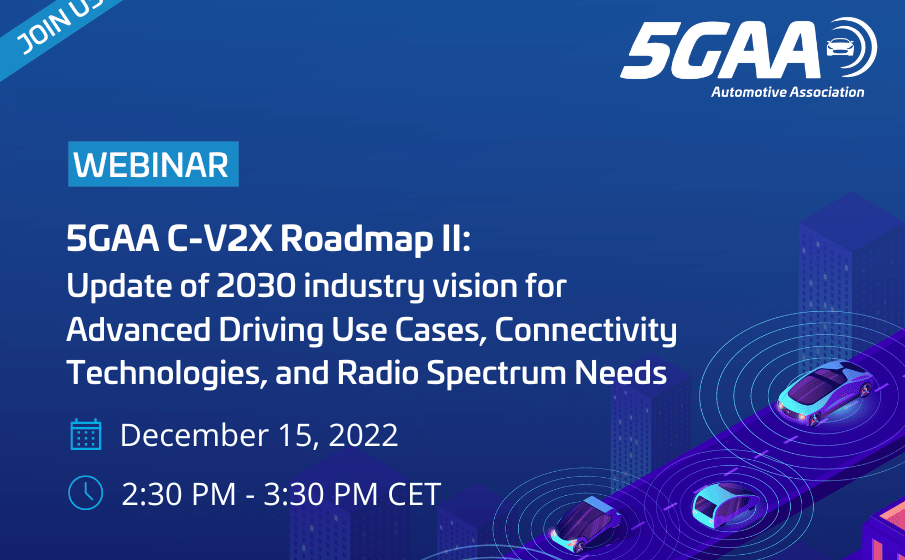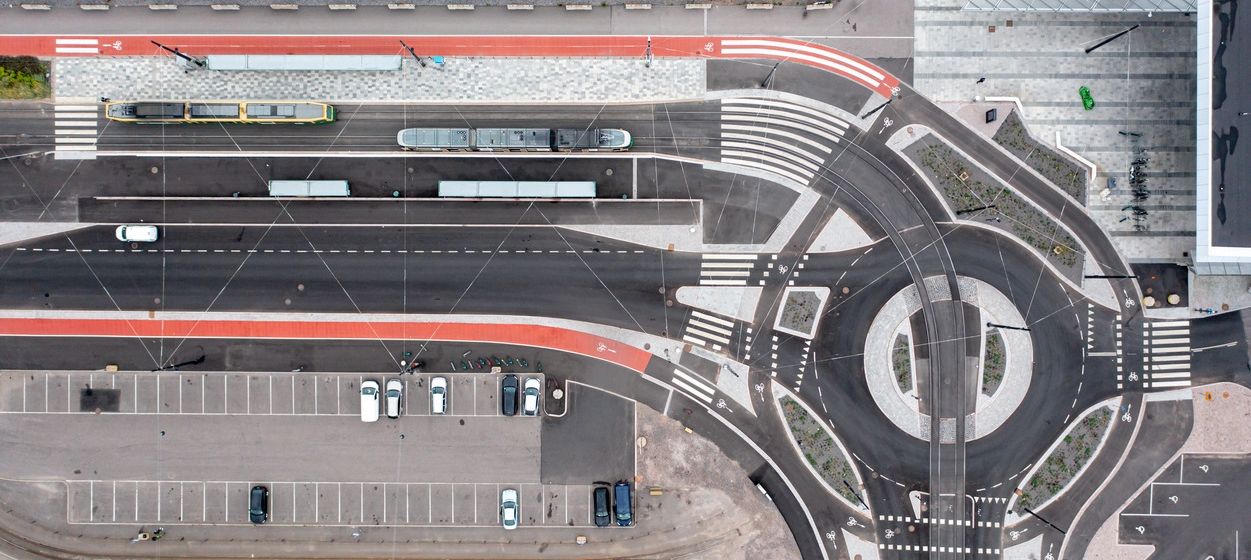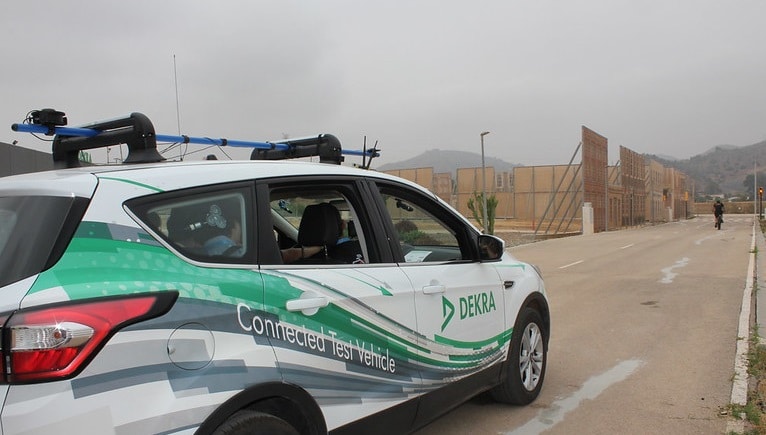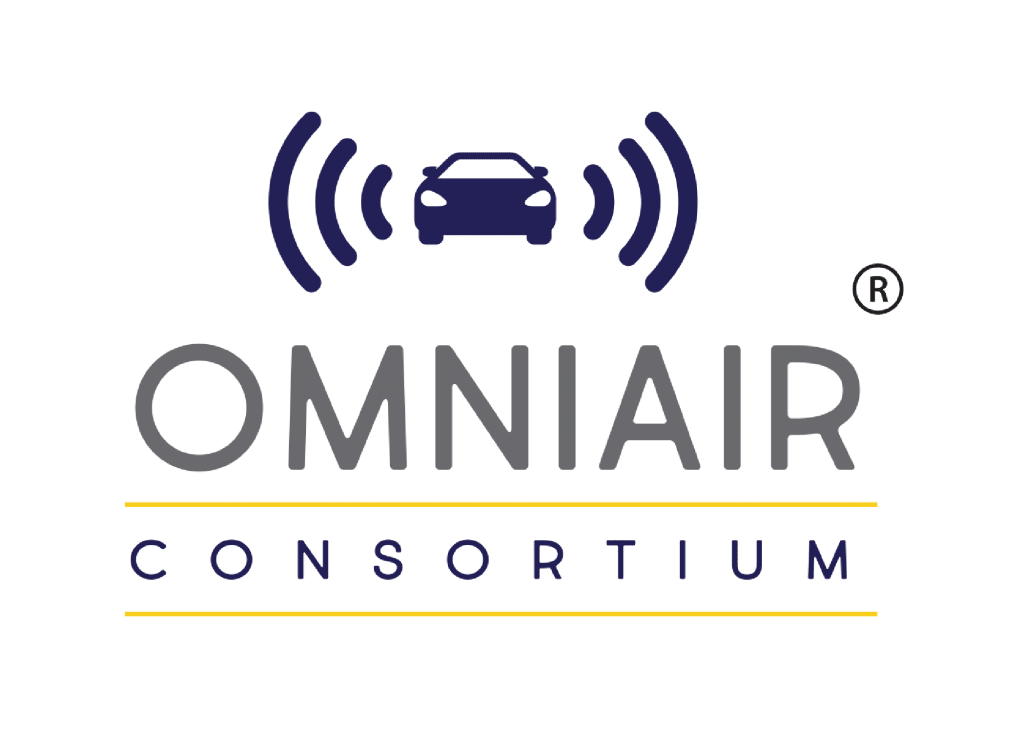
Conclusions and Recommendations for Communications Service Providers Supporting Road Operator Priorities and Expectations
The BRIDGE cross-Working Group work item (XWI) was established under the 5GAA ‘Digital Roads’ priority area. The concept of digital roads includes many elements, but BRIDGE addresses the business priorities of the Road Operators (RO) and how Co-operative Intelligent Transport Systems (C-ITS) and Vehicle to Everything (V2X) services, provided by Communications Service Providers (CSP), can support them directly.
The BRIDGE work item obtained high-level guidance on the expectations and priorities of Road Operators. The Road Operator representatives that participated offered their views on the importance or priority of the business areas to their organisation and indicated which individual use cases were of interest. After a number of individual discussions, the BRIDGE team compiled a summary of the results, which are presented in this report.

C-V2X Use Cases and Service Level Requirements — Volume III
The present report contains the third volume (Volume III) of 5GAA WG1 agreed use case (UC) descriptions for Use Cases developed within the 5GAA and consolidated in WG1. The results and conclusions of this report, and of the future use case descriptions and related communication requirements, are intended to serve as input for the work of other WGs in 5GAA, as well as sources for input and feedback to standardization activities, e.g., in 3GPP.
Read the full report here.

5GAA will hold an online session on Predictive QoS and V2X Service Adaptation—PRESA
Following on the recent publication of a technical report on the Predictive QoS and V2X Service Adaptation (PRESA) Work Item, the 5G Automotive Association is hosting an online session on Friday, January 27, from 3:00 to 4:30 PM (CET).
The session, “V2X Application Adaptation based on Predictive QoS Changes”, will be led by Huawei’s Antonio Consoli and Alimi Hamidian, and Tencent’s Lei Yixue. As the leading contributors to this publication, they will present the highlights of the PRESA technical report on enhancing the framework for V2X application adaptation when a QoS change is predicted in the network.
The three speakers will explain the methodology for analysing V2X use cases that use predictive QoS information to enable V2X application adaptation for the vehicles, as well as the coordination between 3GPP and 5GAA to promote end-to-end solutions and standards for QoS prediction and V2X application adaptation.
Registrations are now open.

Press Release: Public and Private Sectors Aligned Behind V2X Deployment, 2023 a Pivotal Year
Brussels – Today, we join together to reaffirm our continued support for the rapid, widespread deployment of vehicle-to-everything (V2X) technologies in order to further improve safety on American roads. V2X, which allows communication between vehicles, infrastructure, and other road users such as pedestrians and bicyclists, provides drivers with crucial warnings necessary to improve safety. Our organizations represent the full breadth of the transportation stakeholder community and are aligned in our belief that the widespread deployment of V2X technologies can dramatically reduce crashes and fatalities on American roads for all road users.
We believe that 2023 will be a pivotal year for V2X deployment. Transportation stakeholders have aligned behind one V2X technology, cellular vehicle-to-everything (C-V2X), clearing the way for a unified, nationwide approach to the deployment of this tool. The U.S. Department of Transportation (USDOT) recently held a V2X Summit in which it committed to the development of a Nationwide V2X Deployment Plan, lending crucial leadership to the deployment of these technologies. The Federal Communications Commission (FCC) is poised to deliver much needed regulatory clarity for the deployment of C-V2X through the issuance of pending waivers to operate in the 5.9 GHz Band. Multiple stakeholders are making significant investments in CV2X today, and the waivers under consideration at the FCC are urgently needed to move forward with deployment plans.
We wish to express our appreciation for the work being done by USDOT, FCC, and the National Telecommunications and Information Administration to maintain interference-free dedicated spectrum and quickly establish the regulatory framework that will allow for widespread deployment of C-V2X. This includes the FCC first allowing near-term deployments to move forward under waiver authority, the FCC issuing a Second Report and Order that sets the final rules for the future of these technologies and protects the spectrum from interference, and USDOT adopting a Nationwide V2X Deployment Plan. As these steps are undertaken, our organizations will continue to work collaboratively to resolve remaining issues to deploy CV2X, giving drivers and other road users a critical tool to improve safety, reduce crashes, and decrease fatalities.
Intelligent Transportation Society of America
American Association of State Highway and Transportation Officials
Alliance for Automotive Innovation
American Highway Users Alliance
American Traffic Safety Services Association
American Trucking Association
Institute of Transportation Engineers
5G Americas
5G Automotive Association
National Electrical Manufacturers Association
About 5GAA
The 5G Automotive Association (5GAA) is a global, cross-industry organization of over 130 members made of leading global automakers, Tier-1 suppliers, mobile operators, semiconductor companies, and test equipment vendors. It works together to develop end-to-end solutions for future mobility and transport services. 5GAA is committed to helping define and develop the next generation of connected mobility, automated vehicle, and intelligent transport solutions based on C-V2X.

New 5GAA White Paper on Vehicular Distributed Antenna System
The current development of communication technologies opens up new opportunities and enables novel V2X (Vehicle-to-Everything) services in the automotive area. However, specific design constraints faced by the automotive industry lead to complex implementations, as the allowed positions and mounting spaces for antennas, communication modules, and the required cabling can be very limited. These challenges commonly require vehicular-Distributed Antenna System (DAS) approaches.
This white paper provides an analysis of the motivation for and needs associated with vehicular-DAS, as well as proposals for some vehicular-DAS design solutions. In addition, it describes the implementation feasibility and potential benefits of vehicular-DAS based on measured computer simulation results, and evaluates potential vehicular-DAS impacts on current specifications.

Webinar on the new 5GAA C-V2X roadmap to be hosted in December 2022
The 5G Automotive Association recently unveiled the revised version of its 2030 roadmap, first published two years ago. To present the key findings and main takeaways of this release, the association is organising a webinar on the “5GAA C-V2X Roadmap II: Update of 2030 industry vision for Advanced Driving Use Cases, Connectivity Technologies, and Radio Spectrum Needs”, taking place on December 15.
The connected and smart mobility landscape has significantly changed since the 5G Automotive Association published its first 2030 roadmap two years ago. Since then, the C-ITS ecosystem has witnessed a rapid evolution and global deployment of basic safety services, use cases addressing traffic efficiency and VRU protection, and increasing market availability of C-V2X and 5G-V2X-based services and devices.
Over this period, 5GAA has been closely looking at advanced safety and automated driving applications, and the technology readiness to turn them into a market reality. An exhaustive analysis of the regional, regulatory and technological contexts, including state-of-the-art for standardization activities, has resulted in the publication of the 5GAA C-V2X Roadmap II White Paper.
To share this document’s main findings and highlights with the 5GAA community, the association will host a webinar on Thursday, December 15, from 2:30 to 3:30 PM (CET). Chief Technology Officer, Maxime Flament, will unveil 5GAA’s vision of the future and expected timeline for C-V2X mass deployment on the 2030 horizon, with a particular focus on advanced applications bringing on automated driving, teleoperation, automated valet parking, and sensor sharing. 5GAA’s leading contributors to the paper, Andreas Schaller (Bosch), Georg Schmitt (BMW) and Alin Stanescu (Volkswagen), will join Maxime for the Q&A session and shed light on the outcome of this Work Item.
All 5GAA delegates are welcome to join the session and contribute to a fruitful discussion on the association’s foresight and how upcoming developments will contribute to global safety, mobility, environmental stewardship and transportation equity goals.
Watch the recording here.

Interoperability testing
Testing certification in the C-V2X ecosystem
The growth of connected vehicles and infrastructure is becoming apparent throughout the world. C-V2X is constantly evolving, and it is necessary to ensure that all stakeholders (e.g. telecommunication and automotive sectors) are working together to ensure that connected mobility is safer and more efficient. Hence, it is important to ensure that the public and policy-makers trust the technology. 5GAA aims to support regional certification bodies to guarantee safe and reliable intelligent transport systems globally. 5GAA is dedicated to giving the C-V2X ecosystem players a voice in reviewing and developing the certification framework. On top of mandatory regulatory requirements (e.g. Radio Equipment Directive in the EU or FCC rules in the US), a number of organisations offer certification programs based on agreed industry standards which are equally critical to guarantee compliance and ensure interoperability. Such certification programs also facilitate global/regional harmonisation thus helping to reduce testing costs and accelerating time to market.
GCF C-V2X certification program
GCF is a non-profit, global membership-driven organisation that promotes mobile and IoT certification programs for conformity to agreed standards of interoperability. Since 2018, 5GAA has partnered with GCF on a C-V2X certification programme for the radio layer – with an initial focus on LTE PC5 Side Link in Mode 4, upon which global application and services can be built. The program was launched in July 2021. The program allows companies and organisations to certify their C-V2X capable products for short-range functionality, allowing direct communications between V2V and V2I equipment. The program, based on lab conformance testing, is available to both GCF members and non-members. GCF and 5GAA members continue to collaborate within the Connected Vehicles Work Stream (CVWS) to develop and manage the C-V2X Certification Program. For more information, please get in touch with cv2x@globalcertificationforum.org
OmniAir Connected Vehicle Certification
OmniAir Consortium is a leading industry association based in the USA which promotes interoperability and certification for connected vehicles, ITS, and transportation payment systems. Their members include public agencies, private companies, research institutions, and independent test labs. OmniAir aims to provide the opportunity to work collaboratively to develop and determine the requirements for national certification programs. Since 2019, 5GAA has partnered with OmniAir to collaborate on conformance assessment and interoperability testing of C-V2X devices and solutions. A “Joint Steering Committee” was established in 2022 between the two partner organizations to help advance cooperation on technical matters and projects of interest to both organizations (i.e., testing and certification). OmniAir’s Connected Vehicle Certification program allows members to measure compliance and ensure interoperability among products and services that support OmniAir’s specifications. Companies completing the certification may display the OmniAir® Certified logo to demonstrate to consumers, customers and partners that they have created a high-quality, interoperable device that is known to work with other OmniAir-certified devices. /p>
Ecosystem partner
The expertise of our members allows 5GAA to secure its position in the certification discussions in all parts of the world. 5GAA wants to continue supporting the organisations in the C-V2X ecosystem to ensure that the best products are placed on the market.

5GAA Publishes Updated 2030 Roadmap for Advanced Driving Use Cases, Connectivity Technologies, and Radio Spectrum Needs
The article below and the linked document refer to an older version of the 5GAA roadmap, whose most updated version you can find here.
Since the publication of the initial 5GAA roadmap in 2020, we have seen a growing deployment of connected safety services targeting traffic efficiency and safety. Over the past few years, revolutionary digital transformations have begun addressing some challenging mobility problems.
This new white paper synthesises a 5GAA vision of the future and develops the association’s forward-looking C-V2X roadmap in its latest version. It focuses on advanced driving use cases which pave the way to automated driving, teleoperation, automated valet parking, and sensor sharing – all of which contribute to global safety, mobility, environmental stewardship and transportation equity goals.
Read the full paper here.

System Enablers and Best Practices for Next-Gen Cooperative Use Cases — 5GAA Report
In the connected future of transportation, there will be an ever-growing set of cooperative Use Cases that need to be enabled in a standardised fashion. As the implementation of these Day 2+ Use Cases is different from the so far existing Use Cases, new information exchanges other than the currently existing beacon message structures will be required. To determine similarities and common mechanisms for this group of Use Cases, a definition was undertaken to provide a guideline in the field of such new Use Cases.
The term Complex Interaction was selected to describe Use Cases that require an exchange of sequential information with a minimum of three consecutive exchanges. If unique protocols and messages are to be developed for each individual Use Case, the amount of technical complexity would soon become unmanageable. Thus, it is vital to have a scalable framework for these Complex Interactions that covers common technical enablers.
Since so far no general requirements, descriptions and repeated behaviours have been identified for such Complex Interactions, the work introduced here presents an evaluation and representation of requirements which have been determined and developed during the analysis.
Read the full report.

5GAA Demonstrated C-V2X Technology Applications and Safety Benefits for Road Users last October in Málaga, Spain
Malaga, 20 October 2022 – C-V2X technology revolutionizes the mobility ecosystem and how drivers interact with the world, making smart cars a reality today. These cars communicate with their surrounding infrastructure, be it other cars or vulnerable road users, while providing a better driving experience. 5GAA is at the forefront of redefining transportation, by providing real-time, reliable, and actionable information flows to enable safety, mobility, and environmental applications.
Sixteen 5GAA members gathered in Malaga on October 20 to showcase ready-to-deploy C-V2X technology and what the future has in store for the industry and vulnerable road user protection. Prominent members and partners of the 5GAA including 5GCroCo, Anritsu, Autotalks, Commsignia, Continental, Deutsche Telekom, Ericsson, Huawei, Intel, Keysight, Molex, Nokia, Rohde & Schwarz, Stellantis, Vodafone and Omniair demonstrated the current state of C-V2X and a wide range of applications for VRU (Vulnerable Road Users) protection, through a range of indoor and outdoor demos. The over 200 attendees included road operators, journalists from national and international media, and 5GAA delegates.
“C-V2X continues to drive the automotive transformation – and is now the new reality,” says 5GAA Chairman, Christoph Voigt. “Our key asset, the C-V2X technology, became an important part of the worldwide V2X ecosystem. The live demonstrations we have seen here, in Malaga, show us repeatedly that C-V2X is ready for a future where we can use our current infrastructure to improve protection for vulnerable road users.”
Using both direct and mobile network communications, the open-road demonstrations displayed the extensive capabilities of today’s C-V2X technology. To name a few:
- Protecting vulnerable road users and increasing the safety of cyclists on the road by alerting them of a collision
- Enabling smart intersections to enhance VRU safety by sending awareness messages to C-V2X-enabled cyclists
- Warning road users of traffic incidents between connected vehicles
The demonstrations were held at the DEKRA Test Track, a private field-testing area dedicated to connected & automated driving in Málaga, Spain. The test track reproduces multiple traffic situations using different V2X communications systems and networks, as well as traffic elements like traffic signs, traffic lights, road cones, pedestrians’ simulators that allow setting up various test cases. Located in a restricted area of 51.000 m2 (about twice the area of a parking space) with roundabouts, straight and curved roads, intersections, traffic lights and signalling, this connected & automated driving test track is a state-of-the-art facility that researches, develops, tests, and certifies the mobility of the future.
Together with our members, 5GAA has embraced digital transformation and is creating opportunities for transportation innovation. Its goal is to develop end-to-end solutions for future mobility that improve traffic efficiency, driving comfort and road safety to ensure a secure and sustainable transportation ecosystem.




